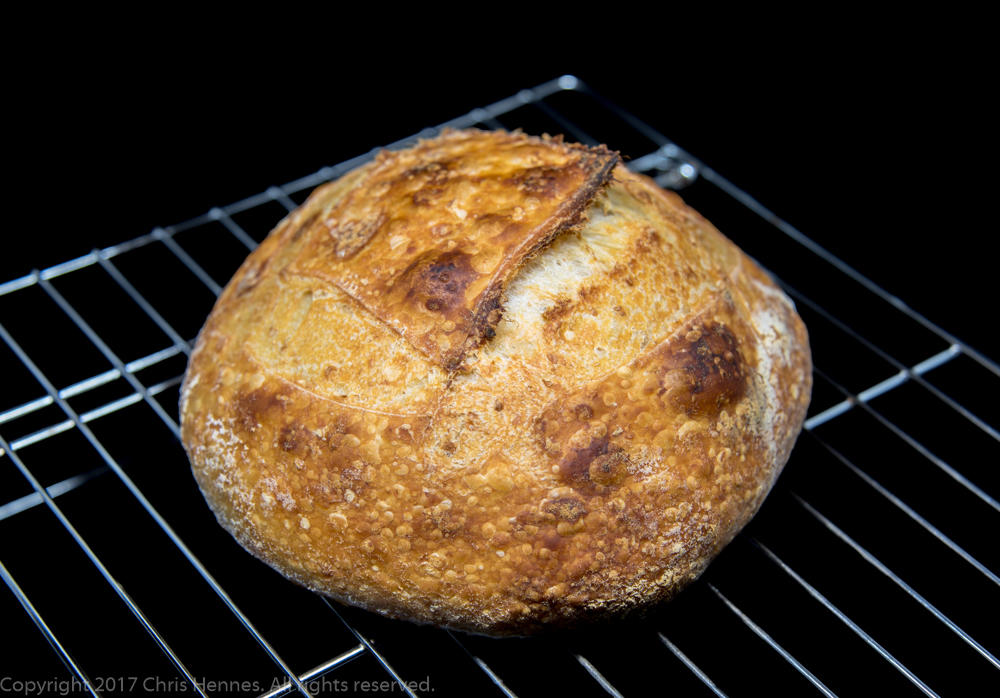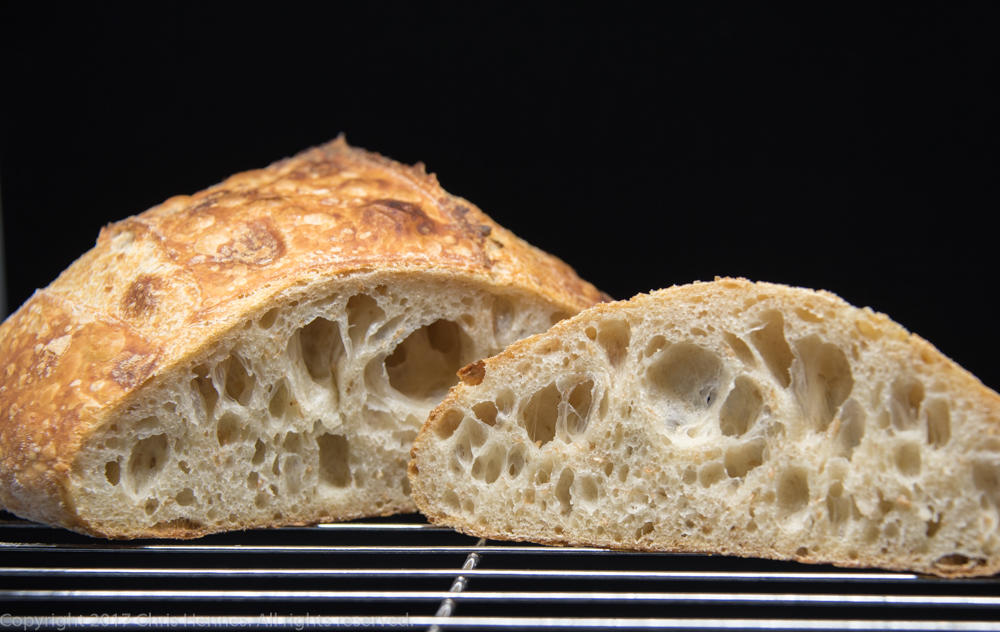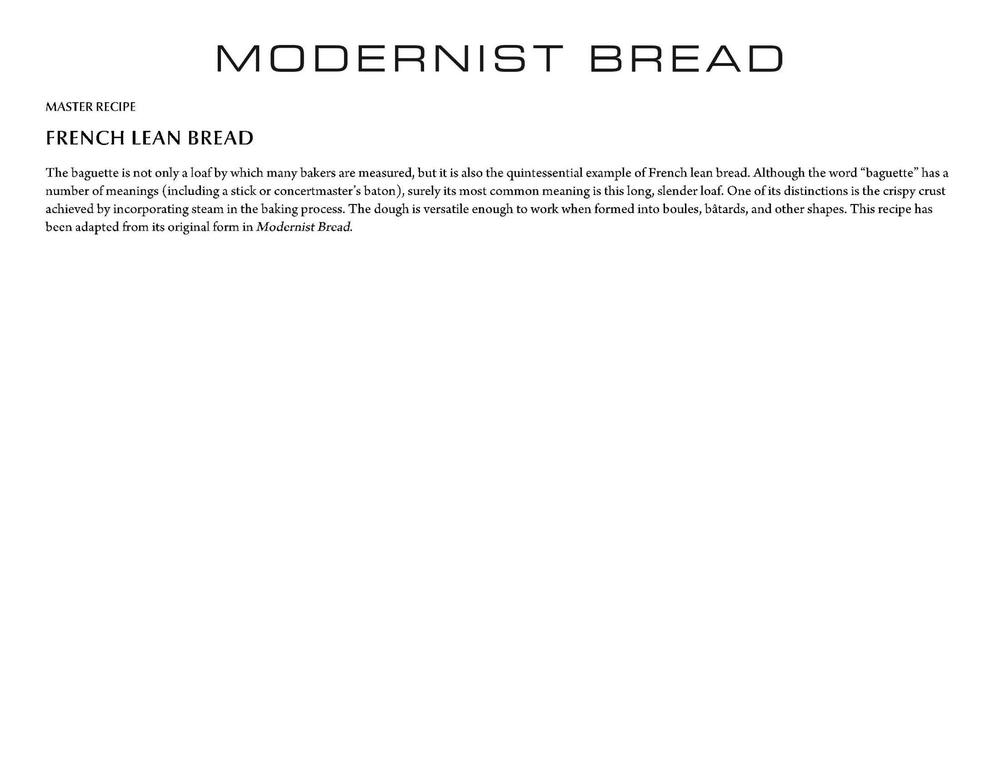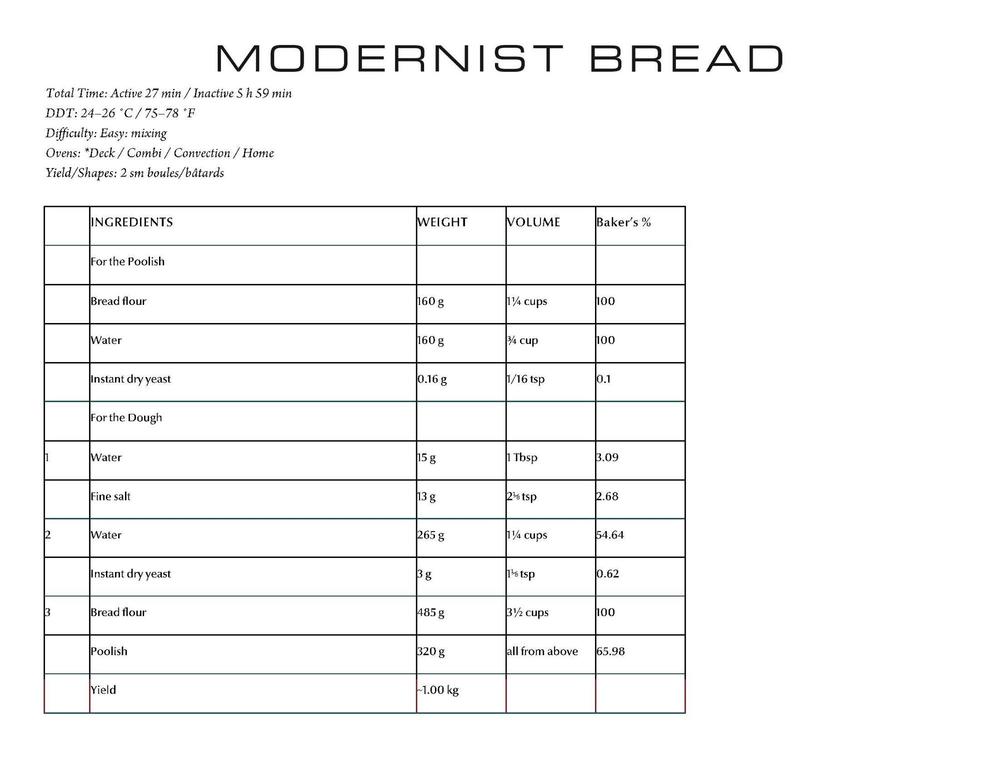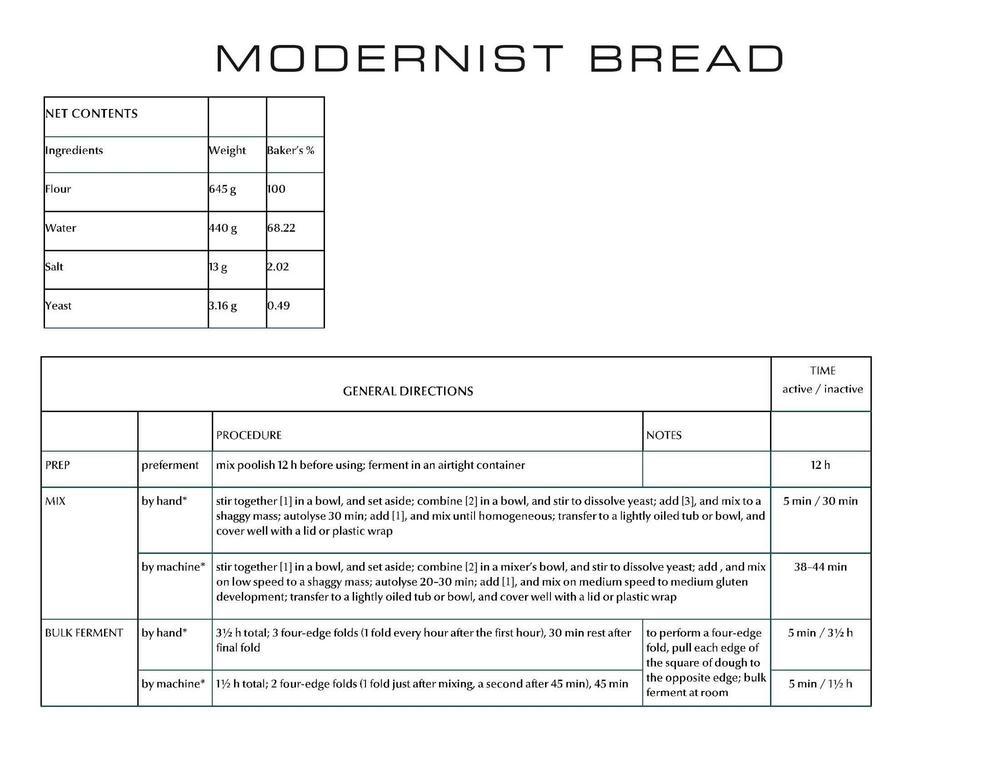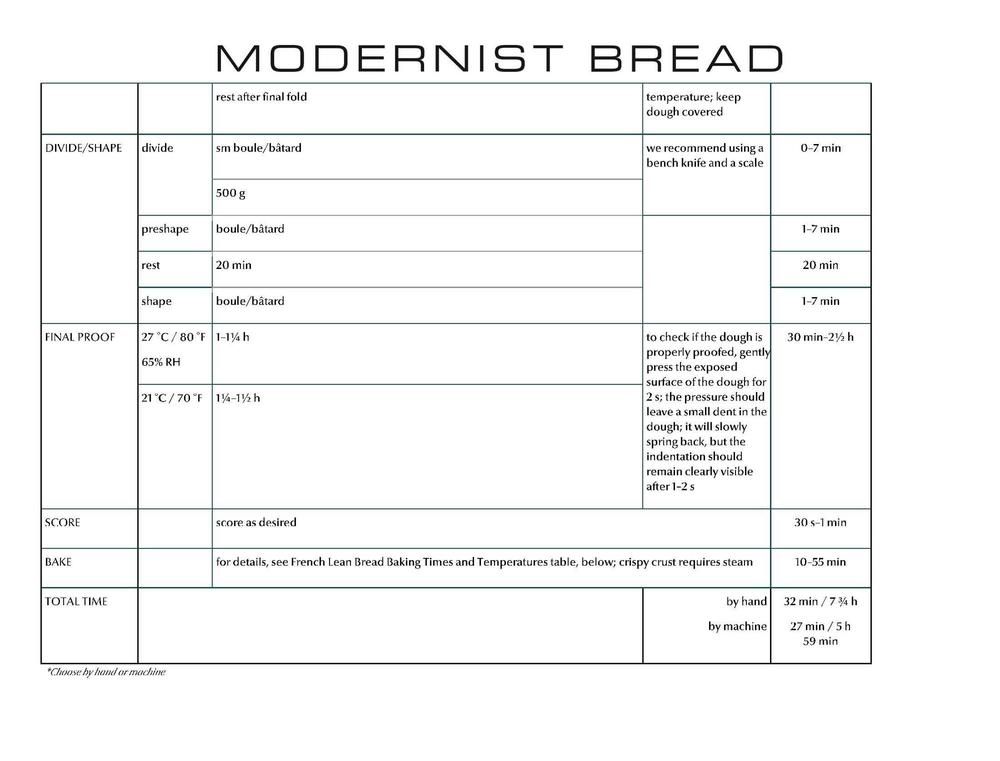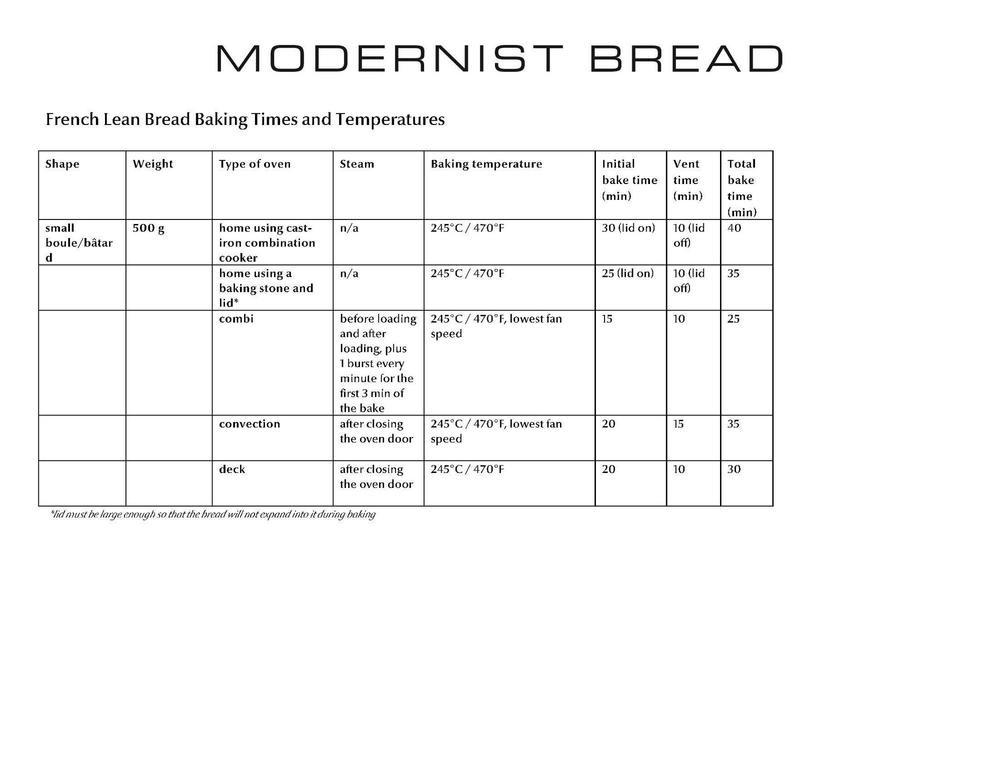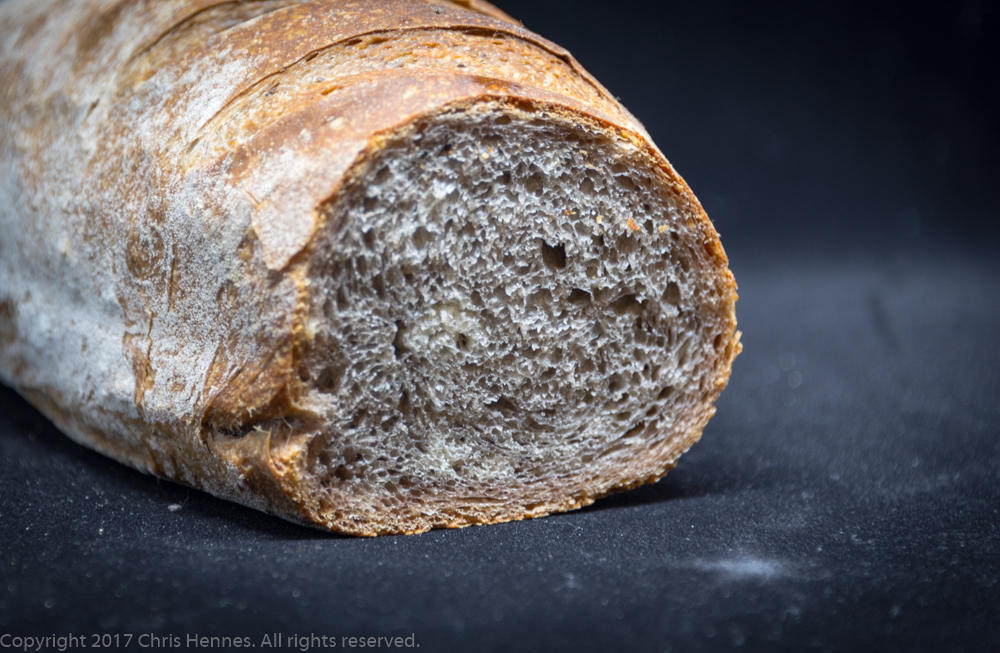-
Posts
10,190 -
Joined
-
Last visited
Content Type
Profiles
Forums
Store
Help Articles
Everything posted by Chris Hennes
-

Modernist Bread: French Lean Bread (MB Contest Topic #1)
Chris Hennes replied to a topic in Pastry & Baking
Proofing is the most nebulous of the steps, and the conclusion they come to is basically that there is no set time, you just have to check for proof using the technique that most of us have been using forever! So the times are just guidance, your exact room temperature, starting dough temperature, and yeast liveliness will all factor in. ETA: I should mention, I think my loaf above was under-proofed based on the way it baked! I probably needed another half hour beyond what I gave it. -
Why not?
-

Modernist Bread: French Lean Bread (MB Contest Topic #1)
Chris Hennes replied to a topic in Pastry & Baking
Page 2•241 list the protein content as 11-13% for "bread flour" and 13-14% and up as "high-gluten bread flour". It's made with either hard red spring or hard red winter wheat. They suggest Organic Artisan Bakers Craft Plus Flour (11.5%) by Central Milling in Utah, but indicate that you can substitute 1:1 with King Arthur Sir Galahad (11.7%), Gold Medal Bread Flour (12%) and Pillsbury Best Bread (12.9%). -
The Modernist variant of the Neapolitan dough (page 5•120) calls for polydextrose and soy lecithin powder.
-

Modernist Bread: French Lean Bread (MB Contest Topic #1)
Chris Hennes replied to a topic in Pastry & Baking
Right, the vent time always applies, it's just a question of whether you need to remove a cover as well as vent the steam out of the oven. Yes, as you suspect there are many, many pages on how and why to use the various types of ovens for different types of loaves. For lean breads in combi ovens they suggest using the lowest possible fan speed, steaming for the first five minutes, or potentially bypassing the thing altogether by baking in a cast iron cooker, clay pot, or Dutch oven. -

Modernist Bread: French Lean Bread (MB Contest Topic #1)
Chris Hennes replied to a topic in Pastry & Baking
They mix the yeast with water for optimal distribution. They don't store their yeast in the freezer, but I store mine there so can personally attest to this method of mixing working just fine. And they add the salt after the autolyze, which necessitates not adding it to the dry ingredients. I think they really just mean "covered" -- I'm pretty sure they are using Cambros, which is what I used. -

Modernist Bread: French Lean Bread (MB Contest Topic #1)
Chris Hennes replied to a topic in Pastry & Baking
For the record, when I made it my overnight temp for the poolish was 70°F, which is the temperature they used when constructing their tables (page 3•17 has a big table of yeast percentage to fermentation time for various preferments). They suggest 68°-70°F as the storage temperature in the chapter on preferments. -

Modernist Bread: French Lean Bread (MB Contest Topic #1)
Chris Hennes replied to a topic in Pastry & Baking
There is (of course) an entire discussion of this in the book in the chapter on yeast, but while they prefer the instant, active dry will work. Room temperature, it's not particularly sensitive. It's a little confusing pulled out of the book, but that's not how it works. It's like this: Water and salt Water and yeast Flour and poolish It's much easier to see that in the actual books, thankfully, this is just an artifact of the reformatted version they've given us to post here. Basically: Mix the salt with a little water. Dissolve the yeast in the rest of the water. Mix the flour, poolish, and yeasted water together. Autolyse 30 minutes. Smear the salt mixture over the dough. Mix. -

Modernist Bread: French Lean Bread (MB Contest Topic #1)
Chris Hennes replied to a topic in Pastry & Baking
A little better looking than my loaf -
For my own use, I really want the thing for making toast, actually! A toaster won't cut it because of the often odd-sized and odd-shaped bread slices from boules. But there may be others out there considering it for more serious baking.
-
At long last I've got my first sourdough from Modernist Bread. I made the Master Recipe, rather than the Modernist variation, or any of the dozens of various inclusion variations, but I see a lot of sourdough in my future because there are a ton of great ideas in here. I also need more practice at shaping and slashing! I went with their preferred levain maturity (12 hours after feeding for a moderate acidity) and final proof (14 hours at 13°C), which produces a terrifically flavored loaf. Clear sourdough flavor, but not over-the-top sour.
- 171 replies
-
- 14
-

-

-
With all the bread-baking I've been doing recently it seems like maybe it's time to finally pick up a toaster oven. A quick search on Amazon yields the hOmeLabs 6 Slice Convection Toaster Oven with a very nearly perfect rating (and yes, the "O" is capitalized). I've never heard of the thing or the brand. Does anyone here have one? What do you think?
-
As promised, the first recipe from The Cooking Lab has been posted.
-

"Modernist Cuisine: The Art and Science of Bread"
Chris Hennes replied to a topic in Cookbooks & References
We've just announced that the top prize in our "Baking from Modernist bread" contest is a free copy of the book (and an autographed bookplate provided by The Cooking Lab). All you have to do to enter is bake one of the recipes we post and then post a photo and description of your results (good or bad!). -
Next week marks the official release of the highly-anticipated Modernist Bread by Nathan Myhrvold and Francisco Migoya. The eGullet Society for Culinary Arts & Letters is excited to provide you with the opportunity to win a copy of the book. The Cooking Lab has provided us with a couple of other prizes that will go to a second and third winner: second place will win an autographed poster and calendar, and third place will receive an autographed poster. They are also providing an autographed bookplate for the first place winner's copy of Modernist Bread. The rules are simple: we are going to post recipes from the book that the team at The Cooking Lab has graciously provided for this purpose. To enter into the contest, you need to bake one or more of these recipes and post about them in the official contest topics by the end of November 2017. Winners will be drawn at random from those posting pictures and descriptions of their completed loaves. Complete rules and other details can be found here. For our first recipe, we're starting with a cornerstone recipe from the book: French Lean Bread. I've personally made this one and it's both delicious and completely approachable by anyone with an interest in this book. Courtesy of The Cooking Lab, here's that recipe (extracted from the book and reformatted for purposes of this contest): The recipes in this book tend to rely on information presented more extensively earlier in the books, so if anything isn't clear enough here please ask and Dave and I will do our best to answer your questions (we've had early digital access to the books for the last month or so). ETA: Here's what my first go at the recipe sounded like coming out of the oven...
-
I have not - none of the recipes I've looked at call for one. I'm really not sure what they'd want to be homogenizing like that, to be honest.
-
No - they have a couple of pages about chemical leaveners in volume 2, including a short discussion of Irish Soda Bread, but no recipes.
-
There aren’t any, they focus only on yeast-leavened breads (commercial or natural).
-
You are right -- I was thinking that there was a sweet spot for the amount of salt you wanted, but upon re-reading the salt section of the book I see that is due to fermentation inhibition, not gluten formation. Wet, which is what the recipe is for in this particular case. I didn't feel like the dough was overly wet (or dry), the hydration felt about right for a French lean bread. I was using King Arthur bread flour. They use "direct" as opposed to one with a preferment or levain. Thanks for all the detailed input, it sounds like your joking "earlier" is really probably just the right answer.
-
This past weekend I was traveling so only had a few hours on Sunday for baking. Fortunately, the book has a table for that! They actually have several pages throughout the recipe volumes dedicated to helping you decide which recipe to try, including "I need this tonight" sections. What the book suggested, among other things, was the direct French lean bread. That seemed sort of pedestrian to me, so I decided to try one of the puree variations. As luck would have it, I chose one that was a little beyond my skill level... I decided to make the olive-puree flavored bread, which basically just replaces some of the water in the basic direct lean bread recipe with a puree of olives. The trick is that olives inhibit the formation of gluten (presumably due to their salt content), so the puree gets added after the dough has been mixed to a medium gluten formation. Basically all the other purees just get added at the beginning along with the water, which is much easier. Well, this is where I got into trouble. Without the puree, you are making a quite low-hydration dough, so at medium gluten formation you've really got a pretty well-developed solid mass of dough. In order to actually mix the puree into the dough I tore the dough into many small pieces and then squished it between my fingers along with the puree. It was sort of fun, and stress-relieving, but also didn't fully incorporate the puree, so once I had a sort-of-solid mass I put it back in the mixer with the dough hook. Unfortunately, by the time it looked reasonably well incorporated, I'd overmixed the dough and the gluten was a mess. Well, I am stubborn, and rather than pitch it, I decided to bulk proof it with a series of four-edge folds to rebuild the gluten. This actually worked reasonably well, but I didn't have time to let it get fully healed, so I formed it and baked it off anyway after perhaps four hours of bulk fermentation with a set of folds every 45 minutes. The resulting loaf was delicious (I do love olives...), but dense and a bit ugly. So my question to you all (and one I could not find the answer to in the book) -- how should I have mixed the puree into the dough?
-
If you haven't already looked through our Sous Vide Index, it's a great resource, with a lot of the original discussion that turned into Modernist Cuisine. And I'll also agree that Under Pressure is not a very good learning resource. These days sites like eGullet and ChefSteps are better places to get started than any single book, with the very expensive exception of Modernist Cuisine.
-
Yes - they include enriched breads, and stop there. So no laminated dough, etc., but they do include information on panettone. Yes, they mention that they "don't find any evidence that pregelatinized starch makes bread softer or bigger, although it does slow staling." (Modernist Bread 2•348).
-

[Modernist Cuisine] Aromatic Alsatian Mustard (5•37 and 6•176)
Chris Hennes replied to a topic in Cooking
(I'm not Judy, obviously, but the Kitchen Lab team is pretty busy these days with Modernist Bread!) I've made this mustard using the technique in the book, but I haven't tried canning it. I think it would work well, but would likely change the flavor somewhat since you'll wind up cooking the fennel and tarragon, and probably extracting more flavor from the other spices. If you have a vacuum sealer I'd suggest making it both ways and comparing (and then of course sharing your results here!). I'd be curious to know the effect of cooking the ingredients on the mustard, since I actually found the balance to be pretty heavily weighted towards the spices rather than the mustard in the raw version. ETA: And no, I'd say you wouldn't need to vac seal if you're canning it. -
No insider information here... on the one hand I'd be surprised if they released one, since the material in this entire book is much more approachable to the home cook than the original Modernist Cuisine ever was. However, the price point is also much too high for most home bakers, so a "condensed" version that strips out all but the most essential information and any references to commercial equipment or procedures would probably be welcomed by a wider audience of home cooks, even at the still-quite-expensive price point of Modernist Cuisine at Home.
-
Right, the recipe actually calls for "Pretzel Salt" -- I didn't have any on hand, so just used a random sea salt (I picked the one with the largest flakes, from the Pacific Northwest, apparently).


